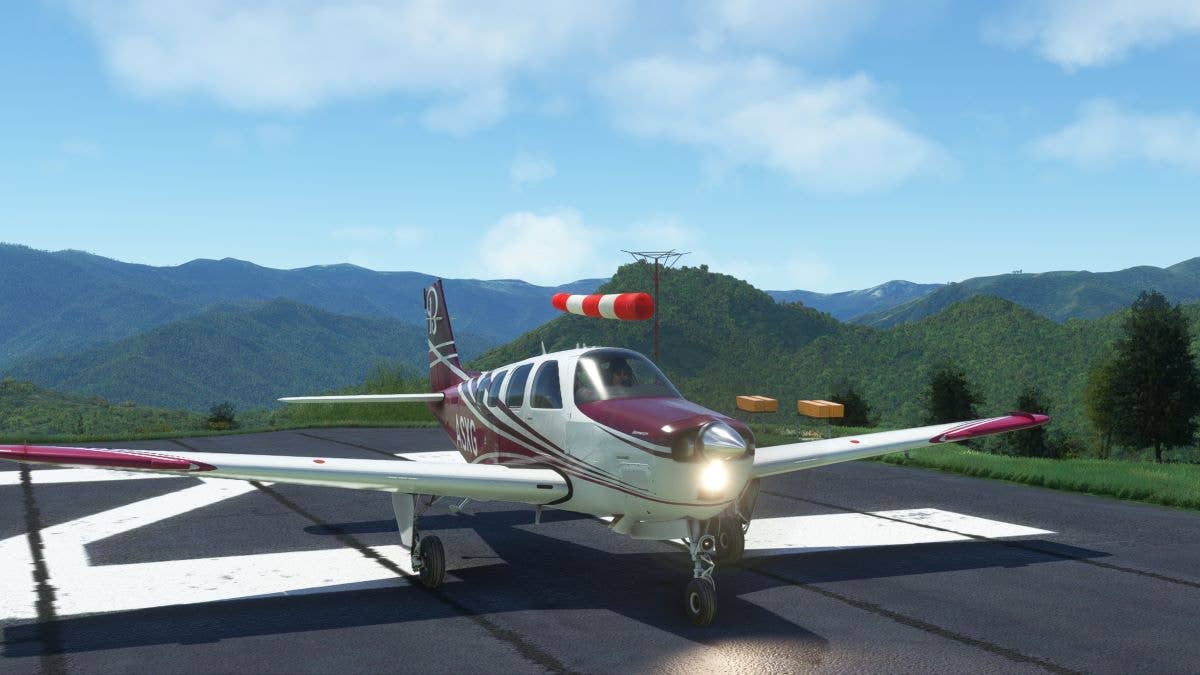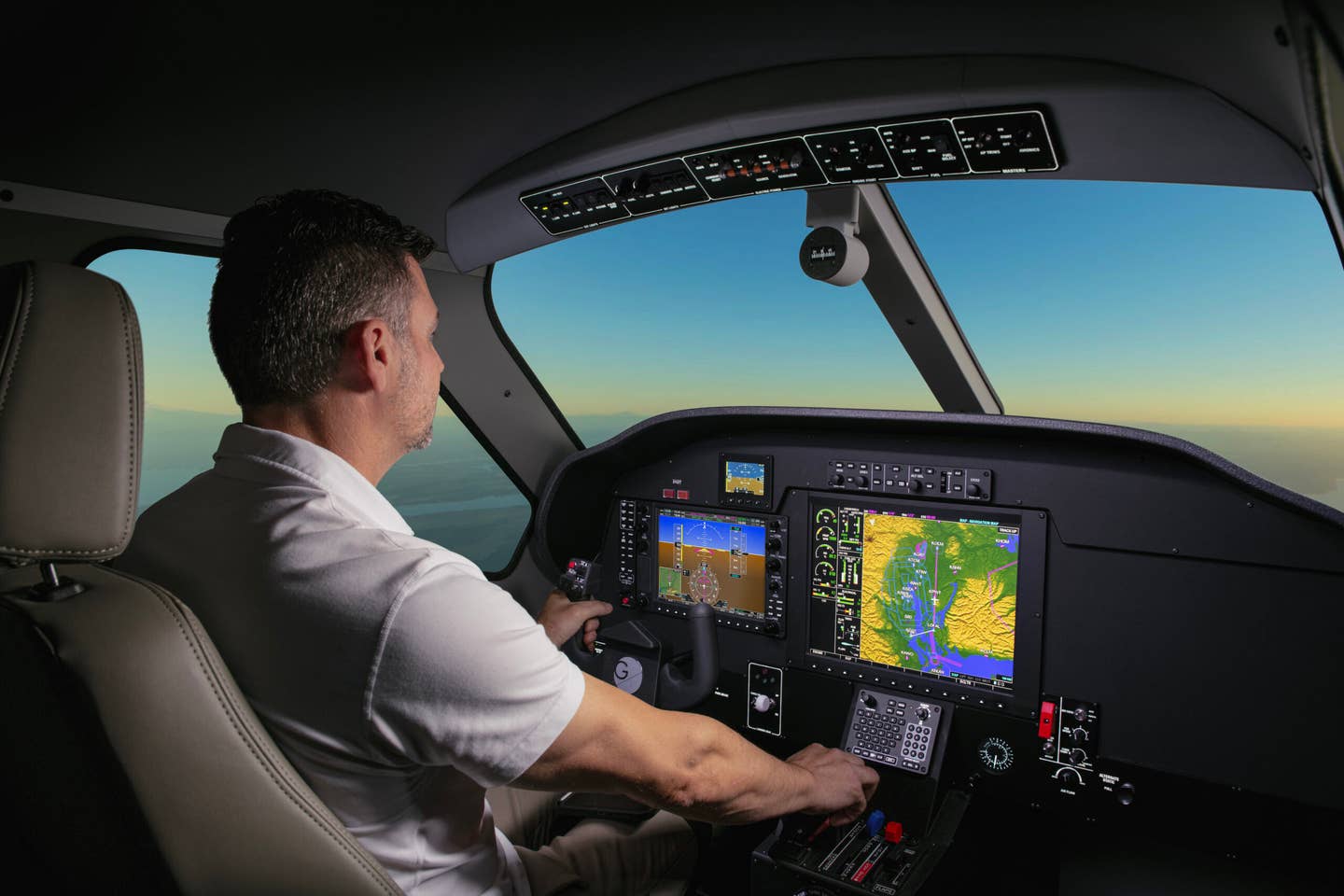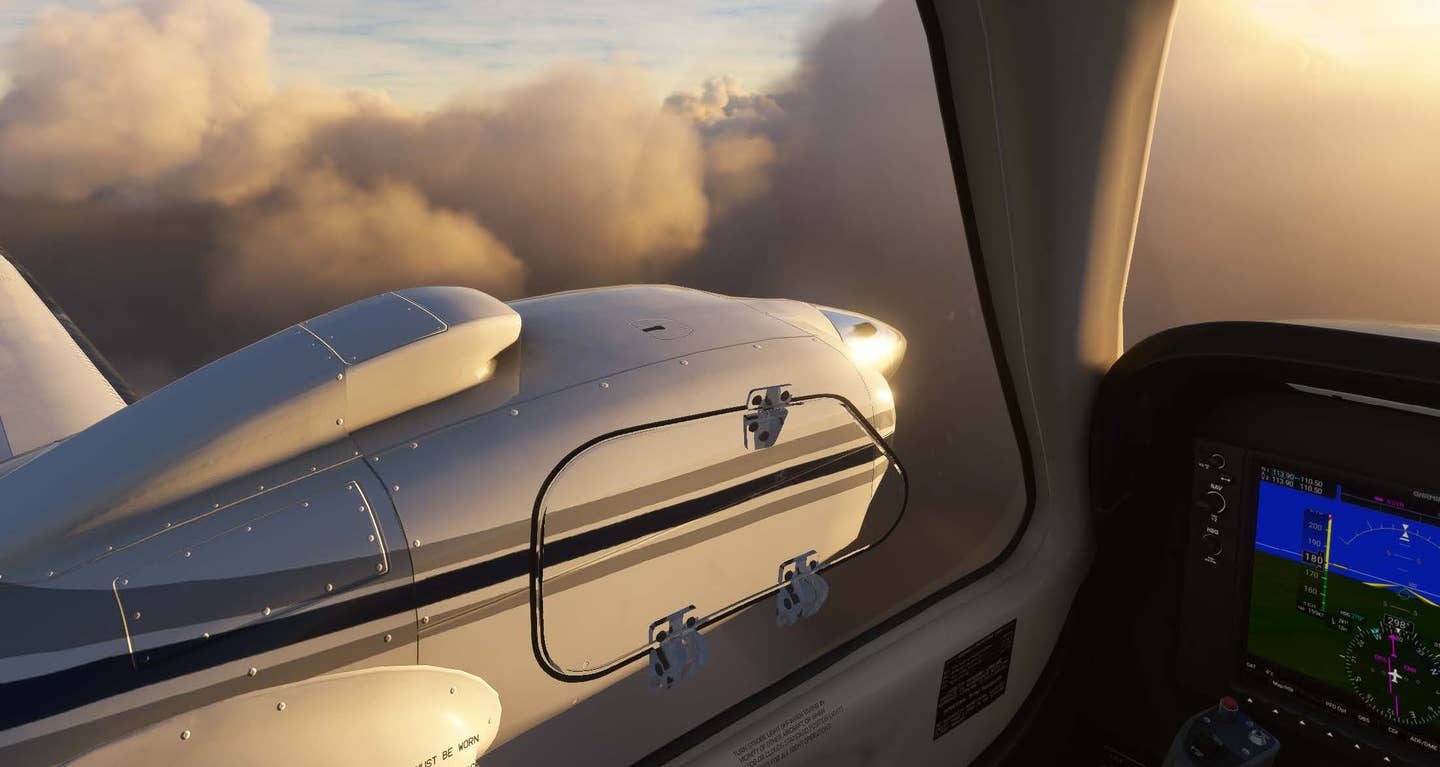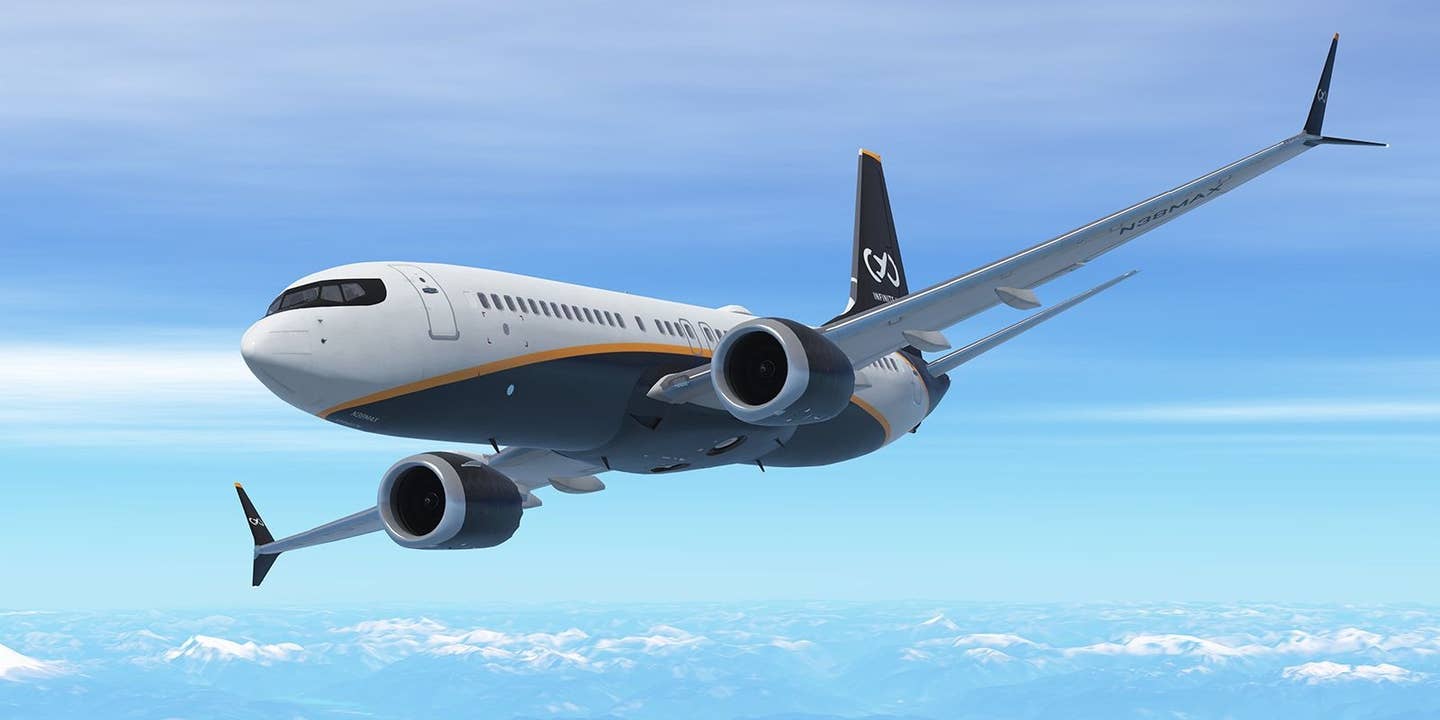A Virtual, Wind-Battled Landing on a Mountaintop Runway
Microsoft Flight Simulator’s live weather feature offers teachable moments flying into Mountain Air, North Carolina.

In Microsoft Flight Simulator 2020, takeoffs and landings at the highly detailed North Carolina airport are filled with challenges. [Image courtesy of Peter James]
Microsoft Flight Simulator 2020 (MSFS) offers an amazing representation of live weather. That was certainly the case the day I had a simulated flight out of the Mountain Air community (2NC0) in Burnsville, North Carolina, at over 4,000 feet.
Winds were howling at full windsock speed out of the northwest, featuring great VFR but a scary wind shear potential and more.
In MSFS, this highly detailed airport is filled with fun and challenge. Even the VFR sectional shown here has a preprinted warning of dangerous turbulence near Mount Mitchell to the east (the highest summit east of the Rocky Mountains).
This airport is enhanced with a small purchase available online in the MSFS built-in store. It's one of the few scenery areas I have purchased because it’s so darn good. (If you purchase this, don’t forget to get FSRealsitic for added head effects, sounds, and vibrations left out of default aircraft in MSFS.)
With winds howling at an estimated 30 gusting to 45 knots, I decided to test the newly enhanced winds and shear model brought into the simulator a few months ago. In addition, ridge lift, thermals, temperatures, and sky cover all come together to the delight of virtual glider pilots. But anything good for glider pilots is even better for us, as these features have been lacking in flight sims I have previously flown.
The takeoff at over 4,000 feet msl was noticeably sluggish, but the powerful Beechcraft Bonanza did it well. With the 40-plus-knot headwinds, we were airborne immediately. The joy was short-lived, however, as the uphill runway, close terrain, houses, and trees started in with an immediate stall horn peeping, wind shear on the airspeed gauge, and control sloppiness. Usually takeoffs don’t require a battle or fight. I have found that’s always the case on landings but not on takeoffs. Here’s where the realism kicked in. It was a fight to several hundred feet off the departure end and as the terrain fell out from beneath you. I was all smiles as this was so much fun, but how would the landing be? Even on a calm day, this place looked challenging.
A week later, I returned to the mountaintop to see what calm weather might have in store. I chose the default Mooney Ovation for the mission. The winds were northwest at 1 knot according to the in-flight map that displays the live conditions. I figured it would be perfect, but at a simulated time of day, I once again experienced a hellacious downdraft on the departure end of Runway 14—this time more than 2,000 fpm down.
This photo shows the reality of the short final to Runway 14.
This was certainly one of the most challenging airports I’ve ever seen in flight-sim life. I believe it is even more risky than Aspen, Colorado (KASE). I’d highly recommend it to you MSFSers—just have several aircraft lined up as you’re probably going to wreck quite a few on any given day. It’s a mental and physical workout as well.
The Honeycomb flight controls offer precision and quality to get you through those crosswinds and wind shear days with ease.
Today’s flight simulators are continuously shortening the gap between digital flight and physical flight. No longer are the days of traveling to a training facility and climbing into a five or six-figure device to simulate flying an aircraft. With a comparable home computer and today’s leading-edge software programs, you can create a tangible training platform in the comfort of your own home. The Flight Sim Starter Set includes our most popular yoke, the best throttle on the market, and highly popular pedals to assure you stay on the centerline.
Buy Now
Sign-up for newsletters & special offers!
Get the latest FLYING stories & special offers delivered directly to your inbox







